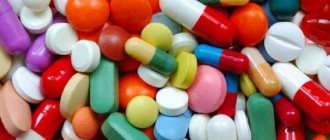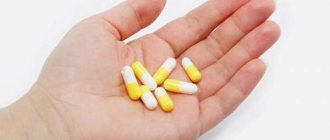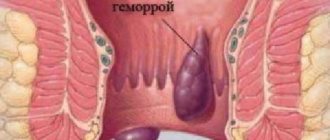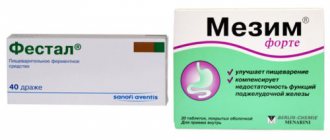Instructions
Papaverine is used for smooth muscle spasms. The drug eliminates pain, relaxes muscles, and lowers blood pressure. Has a slight sedative effect. Available in several dosage forms. To prevent the occurrence of unwanted reactions, you need to read the instructions for use.
Papaverine is available in several dosage forms.
Form of production
Papaverine is available in the form of tablets of 10 and 40 mg, rectal suppositories of 20 mg and a solution for injection of 20 mg in one ampoule.
The tablets have a white or yellowish tint. They are odorless, have a bitter taste, and have two perpendicular marks. For adults, the drug is available in a dosage of 40 mg, for children – 10 mg. Packed in blisters of 10 pieces. The cardboard package contains 2 blisters.
The suppositories are produced in a torpedo-shaped form for insertion into the rectum, have a white tint, and are odorless. Dosage – 20 mg. One blister contains 10 suppositories. The cardboard package includes one blister and an insert – Papaverine’s instructions.
Papaverine solution is transparent, odorless, available in ampoules of 20 mg. Cardboard packaging includes 10 ampoules.
Compound
The composition of Papaverine depends on the form of release of the drug. In all cases, the medicine contains one active component - papaverine hydrochloride. Tablets, injection solution and suppositories include various auxiliary components. The exact information can be found in the table.
Chemical composition of various forms of Papaverine
The pharmacological group of the drug is myotropic antispasmodics, vasodilators.
International nonproprietary name (INN) – Papaverine, Papaverine (English), Papaverinum (Latin).
Papaverine ointment
Papaverine ointment is a separate medication group. The product contains an active component - papaverine hydrochloride and auxiliary components - purified water, lanolin, sunflower oil.
Indications for use:
- conditions associated with intestinal spasms;
- spastic constipation;
- haemorrhoids;
- anal spasm;
- spasms caused by diseases of the genitourinary system.
Papaverine cream is applied to the perineum and anus to reduce pain. It is recommended to do this after carrying out hygiene procedures 2–3 times a day. If the patient uses other ointments and gels, be sure to inform the doctor about this.
Indications for use
The medication is prescribed for spasms of the bronchi and blood vessels. Helps eliminate muscle tension in the following diseases and conditions:
- inflammation of the gallbladder wall;
- contraction of the pylorus of the stomach;
- tingling in the abdominal area of unknown etiology;
- circulatory disorders in the kidney;
- pancreatitis.
It is used as part of complex therapy for acute lack of blood supply to the myocardium, endarteritis. To relieve spasms, doctors prescribe the drug before and after surgery.
Pharmacological properties
The drug papaverine has a good antispasmodic and moderate analgesic effect. Due to its ability to relieve spasm from the smooth muscles of internal organs and blood vessels, the medicine has a mild hypotensive effect. This makes it possible to use it in the initial stages of hypertension and in some other conditions characterized by increased blood pressure.
Once in the body, the active component papaverine hydrochloride inhibits the activity of phosphodiesterase enzymes, which leads to a decrease in calcium concentration in cells. This process contributes to disruption of the contractile function of smooth muscles, consequently, muscle relaxation, elimination of spasm and pain.
The medicine Papaverine is used for diseases of the respiratory, digestive, cardiovascular systems, and for diseases of the kidneys, liver, gall bladder and other organs.
Important! Despite Papaverine’s ability to relax the smooth muscles of the muscles, a person’s motor activity is completely preserved.
Pharmacology
Papaverine belongs to the group of antispasmodics. Being an opium alkaloid, it affects smooth muscles, relieving tension and promoting relaxation.
The mechanism of action is explained by chemical reactions triggered by the drug entering the blood: papaverine affects muscle excitation by inhibiting phosphodiesterase. As a result, cells begin to accumulate cycloadenosine monophosphates and release calcium ions. The result of the reactions is relaxation of smooth muscles, relief of spasm of the esophagus, as well as the canals of the genitourinary and respiratory systems. In addition, vascular tone decreases, and therefore the walls become more elastic.
Pharmacokinetics
The active substance, entering the body, is quickly absorbed, regardless of the form of release of the drug. Communication with blood proteins is up to 90%. The drug is metabolized in the liver. The approximate half-life of Papaverine ranges from half an hour to 120 minutes. Active and auxiliary components are excreted from the body by the kidneys in the form of metabolites.
The effect of the medicine is observed after 15 – 20 minutes
When to use the product
What is Papaverine used for? The medicine is used orally, rectally, intravenously or intramuscularly for various diseases that cause spasm of the smooth muscles of the body.
Indications for use of Papaverine are as follows:
- diseases of the abdominal organs (cholecystitis, spastic colitis, pancreatitis, etc.);
- as a complex treatment for relieving hypertensive crisis;
- violation of urine discharge from the kidneys;
- spasms of peripheral veins;
- conditions associated with contraction of cerebral vessels;
- to relieve angina attacks;
- respiratory dysfunction;
- narrowing of the renal arteries;
- narrowing of the urinary tract caused by spasm, causing urinary retention.
Papaverine should be taken strictly according to a doctor’s prescription, despite its wide spectrum of action and apparent safety. Improper use of the drug often provokes many side effects.
To whom the product is prohibited
Instructions for use of Papaverine include absolute and relative contraindications to the use of the medicine.
Absolute:
- individual sensitivity of the patient to the active and auxiliary substances of the drug;
- heart diseases associated with its conduction (blockades);
- acute kidney pathologies, renal failure;
- liver pathologies;
- glaucoma;
- age of patients after 65 years, which is associated with an increased risk of developing hypertension);
- children's age: injections/tablets/suppositories – 6 months/14 years/18 years.
When prescribing a drug, its contraindications must be taken into account.
Relative:
- recent traumatic brain injury;
- chronic renal failure;
- anaphylactic shock;
- vascular collapse;
- dysfunction of the adrenal cortex.
Important! The decision on the advisability of prescribing a drug in the presence of relative contraindications is made by the leading specialist, assessing the balance of benefit and risk in a particular case.
Contraindications
Hypersensitivity, coma, respiratory depression, atrioventricular conduction disorder, glaucoma, liver dysfunction, old age (risk of hyperthermia), children's age (up to 1 year).
Carefully
The drug should be prescribed with caution and in small doses to elderly and debilitated patients, as well as patients with traumatic brain injury, impaired renal function, hypothyroidism, adrenal insufficiency, prostatic hypertrophy, as well as patients with supraventricular tachycardia and those in a state of shock.
Side effects
Papaverine in tablets, injections and when using rectal suppositories can cause side effects. More often this is due to non-compliance with the dosage prescribed by the doctor or self-medication with the drug.
Undesirable consequences:
- pathological decrease in blood pressure;
- heart blocks;
- increased sweating;
- nausea;
- constipation;
- yellow tint to the dermis and eyeballs;
- irritability, drowsiness;
- fatigue, loss of ability to work;
- when using the drug intravenously, vein thrombosis is possible;
- blood composition disorder;
- allergic skin rashes.
If the described symptoms appear, you must immediately stop taking the medication and seek medical help. Treatment is usually carried out by normalizing blood pressure and removing excess drugs from the body.
Overdose and side effects of Papaverine
During use, side effects from the cardiovascular system may occur. There is a decrease in pressure, ventricular extrasystole. Lethargy, impaired intestinal motility, and increased activity of liver enzymes often occur. In the anal area, after insertion of the suppository, a burning sensation and discomfort sometimes occurs.
Allergic reactions are possible in the form of rash, itching, urticaria, angioedema.
If recommended doses are exceeded, visual functions are impaired, weakness occurs, and blood pressure decreases to critical values. At the first alarming symptoms, stop treatment and perform gastric lavage.
Directions for use and doses
Let's look at how to take Papaverine. For children and adults, the dosage is selected individually depending on the characteristics of the course of the disease.
The dosage and regimen are selected exclusively by the doctor.
The dosage of tablets for an adult is usually 40 – 60 mg. Papaverine is prescribed to children in accordance with the characteristics of the disease, age and weight of the patient.
Suppositories are prescribed in 1 - 3 pieces (20 - 60 mg) for adult patients. Until the age of 14, the drug is used with extreme caution only if necessary.
Papaverine solution is administered intravenously very slowly, exclusively by a medical professional. The contents of one ampoule are diluted with 20 ml of sodium chloride. Intramuscular injections of Papaverine are prescribed to patients at 40–60 mg per day.
Dosage and administration
The frequency of administration can reach 3-4 times a day in adults and children from six months of age.
Tablets are taken according to the following scheme, calculating the amount of active substance:
- patients from six months to 2 years – 1/8 tablet per 1 dose;
- patients from 2 to 4 years old – 1/6 tablet at a time;
- patients 5-6 years old – ¼ tablet;
- adults: 1-2 tablets per dose.
Suppositories are used for hemorrhoids, which are caused by thrombosis of the veins of the large intestine and muscle tone. Impaired intestinal blood flow reduces its ability to peristalsis, leading to cracks and other damage. Suppositories that contain fat, upon contact with the mucous membrane of the anal ring, turn into a liquid state, which greatly facilitates the process of administering the drug. By relieving rectal spasm, Papaverine increases its elasticity, normalizes peristalsis, and facilitates defecation. The minimum daily dose is 1 suppository per day, preferably at night. The dose should not be increased beyond 3 suppositories per day.
The ready-made solution, intended for intramuscular administration, has immediate bioavailability. The exact dosage must be calculated by the doctor, because it directly depends on the symptoms, age of the patient and concomitant diseases.
Use during pregnancy
Despite the fact that one of the contraindications of Papaverine is the period of pregnancy and lactation, the drug is still prescribed to women bearing a child.
Many mothers face such a problem as increasing the tone of the uterus. This condition brings a lot of unpleasant sensations, in addition, it poses a threat of premature birth. To relax the muscles of the reproductive organ, Papaverine tablets or suppositories are often used. In a hospital setting, injections can be used.
Papaverine is used to prepare the cervix before childbirth. The drug is used in combination with No-Spa and other agents. Throughout the day, the woman is administered one suppository of each drug.
When breastfeeding, the use of Papaverine is contraindicated, since the active component of the drug passes into the mother's milk and therefore reaches the baby. If there is a need to use medication, stop feeding the baby.
special instructions
During therapy with the medication, you should avoid drinking alcohol. The active components of the product in combination with alcohol can cause a negative reaction.
Papaverine often has positive reviews, but despite this, the medicine should be used only as prescribed by a doctor.
The drug of any release form is used with extreme caution among patients with severe pathologies of the kidneys and liver.
Alcoholic beverages should be avoided during treatment with Papaverine.
When administered intravenously, the injection is given slowly and under the supervision of a doctor. Too rapid administration can cause heart rhythm disturbances and other negative consequences.
Among patients who have suffered skull injuries, the medicine is used only if necessary in a hospital setting.
Side effect
Allergic reactions, nausea, drowsiness, decreased blood pressure, constipation, increased transaminase levels in the blood, eosinophilia, and increased sweating are possible. With rapid intravenous administration, as well as with high doses, atrioventricular block and heart rhythm disturbances may develop.
Overdose
Symptoms: blurred vision (double vision), weakness, drowsiness, hypotension. Treatment: gastric lavage (milk, activated carbon), maintaining blood pressure.
Analogs
The drug has many analogues that have similar therapeutic effects and indications.
Papaverine analogues included in the electronic list of drugs (RLS) are as follows:
- Platyphylline with papaverine - has an antispasmodic, vasodilating effect. The drug is used for diseases of the abdominal organs, to eliminate spasms of cerebral vessels, for angina pectoris, endarteritis, bronchospasms and other pathologies;
- Papaverine bufus is an antispasmodic medication that causes dilation of large and small vessels, restoring blood flow. The medicine has a hypotensive, moderate analgesic effect;
- No-Shpa forte is a drug that is produced in the form of tablets and solution for injection. The product has a vasodilator, antispasmodic, and moderate analgesic effect;
- Spazmolysin suppositories - used to eliminate pain caused by spasms of smooth muscles in diseases of the respiratory, cardiovascular, and digestive systems;
- Spazmobrew tablets are a product based on hyoscine butylbromide, which has an antispasmodic effect. It is used to treat spasms of the gastrointestinal tract, to prevent nausea and vomiting in patients who have undergone surgery, to coordinate the birth process in women with renal colic and other conditions.
The description of the products is for informational purposes only; exact information should be clarified from the instructions for use of the medicine or from the attending physician.
pharmachologic effect
Papaverine hydrochloride is a myotropic antispasmodic agent. Reduces the tone and reduces the contractile activity of smooth muscles and therefore has a vasodilator and antispasmodic effect. Causes dilation of arteries, increases blood flow, incl. cerebral. When used in average therapeutic doses, papaverine hydrochloride has virtually no effect on the central nervous system. In large doses, it reduces the excitability of the heart muscle and slows down intracardiac conduction. It is an inhibitor of the phosphodiesterase enzyme and causes intracellular accumulation of cyclic 3,5-adenosine monophosphate, which leads to impaired contractility of smooth muscles and their relaxation during spastic conditions.
Patient reviews
Valery, Taganrog “Papaverine is always in our medicine cabinet. Of course, my wife and I don’t take pills constantly and uncontrollably, but in some cases they really do help, especially since we both suffer from periodic high blood pressure. The drug is good, it’s inexpensive, I’m satisfied with its effect.”
Natalya, Kazan “When the weather changes, I always suffer from headaches. This is due to vasospasm. The doctor recommended that I take a Papaverine tablet. The product helps well, after 15-20 minutes I feel relief.”
Victor, Ivanovo “Several years ago I was diagnosed with urolithiasis. I was in the hospital where they crushed stones for me. Now fine sand is still coming out little by little. In this case, the pain is quite severe. To alleviate the condition, the doctor prescribed me Papaverine. The drug does its job perfectly, the pain goes away within a quarter of an hour.”









